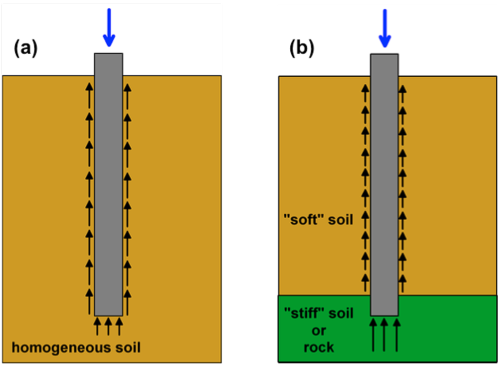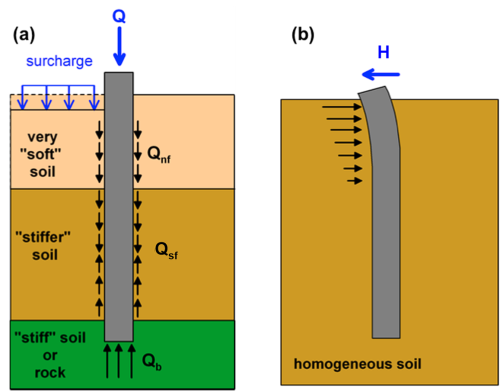6.5 Load transfer mechanisms
Piles are often classified according to the mechanism of transferring foundation loads to the subsoil. This classification does not refer to the properties of the pile itself (geometry, material, construction method) but rather to the subsoil and to the loading conditions:
- Friction piles in relatively homogeneous soil transfer vertical loads in the subsoil mainly via the development of skin friction along their surface (Figure 6.12a).
- End-bearing piles, which toe rests on a relatively stiff formation, compared to the above soft soil, transfer the vertical load mainly to the lower stiff formation (Figure 6.12b).

In practice, all piles act both as friction and end-bearing, and transfer loads via both skin (shaft) friction and end bearing resistance. The predominant mode of load transfer characterises them as friction or end-bearing piles: If the skin friction resistance Qsf is greater than about 80% of the end bearing resistance Qb, the pile is referred to as a friction pile, otherwise it is referred to as an end bearing pile. A special case is that of piles subjected to negative skin friction at their upper part, as a result of settlement of surficial soil layers. In that case the surficial soil layers impose a compressive load on the pile Qnf, rather than contributing to its resistance (Figure 6.13a).
On the other hand, laterally loaded piles subjected to lateral forces and bending moments resist the applied loads though bending, and the development of passive earth pressures at the upper part of the pile (Figure 6.13b).


